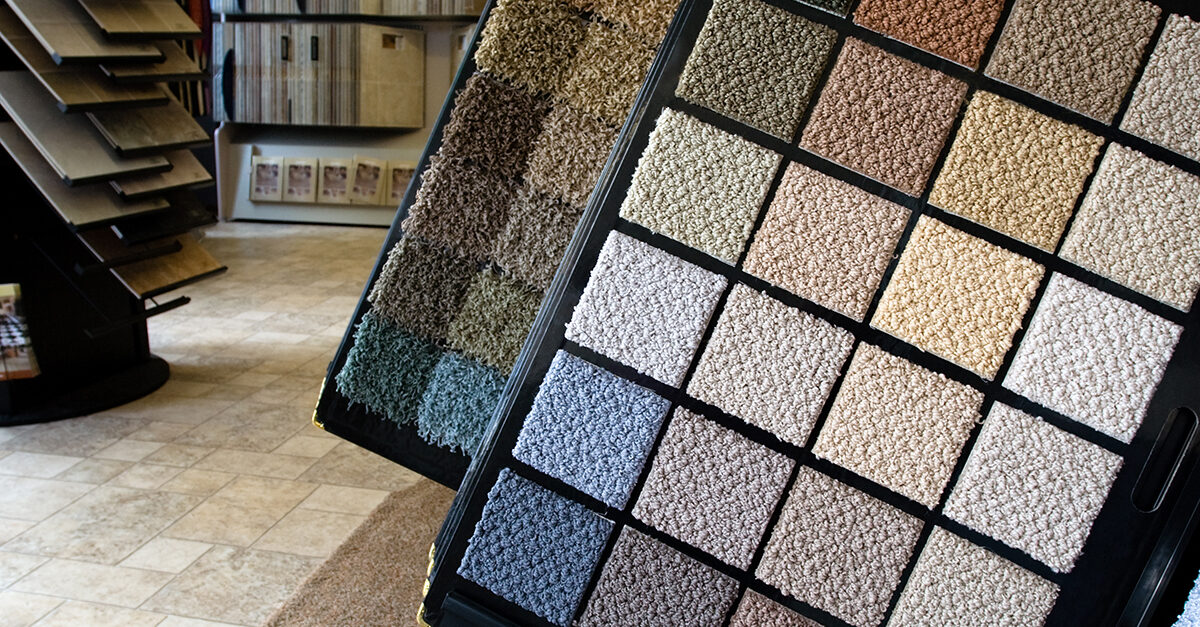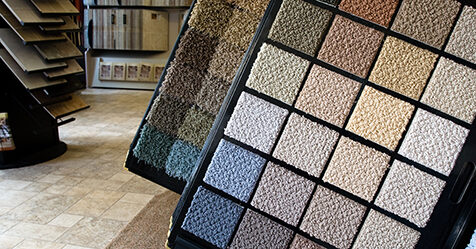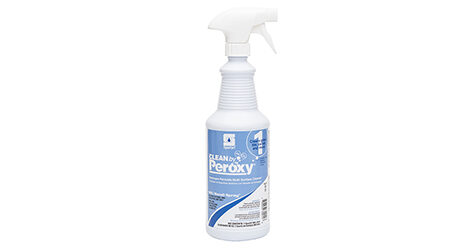From day to day and job to job, cleaning challenges change all the time. When cleaning fibers, professional cleaning technicians must know the type and the specifications of the fibers they are working with—and which methods and products will yield the best results.
Let’s look at the fibers that cleaning technicians will encounter on the job, including their unique characteristics and the cleaning challenges they exhibit.
Polyester
The most significant issue cleaning technicians will face with polyester is maintaining its original appearance, which often suffers from texture issues. Polyester lacks resiliency and readily shows abrasions from usage and maintenance. These abrasions impede its ability to reflect light, making it look darker than intended even if it is clean.
Improper cleaning agents may also leave behind a sticky residue that leads to resoiling issues, further affecting polyester’s appearance, but this is more of a problem with triexta and olefin fibers. Some general cleaning guidelines include the following:
- Use a vacuum cleaner that has received a Seal of Approval (SOA) designation from the Carpet and Rug Institute (CRI)
- Apply strong alkalines or bleaches when needed, as they are unlikely to adversely affect the dye in the polyester as long as the products are made for the carpet cleaning industry
- Prepare for a potentially tougher cleaning job; the resiliency of polyester is more challenging than that of nylon and wool fibers, but a high density and a shorter pile height can offset this
- Although polyester is suited to all cleaning methods, be aware that absorbent pad extraction, or bonnet cleaning, will likely violate the manufacturer’s specifications and void the warranty; in addition, the bonnet may act like sandpaper if sand is not thoroughly removed before employing this method and may damage the fibers.
Triexta
The greatest challenge of triexta is its texture; these texture issues are likely to come from using the improper vacuum cleaner and employing cleaning methods not recommended by the manufacturer. To clean triexta, follow these guidelines:
- Use special SOA-approved vacuums with soft brushes
- As with polyester, apply strong alkalines or bleaches if those products are made for the carpet cleaning industry
- Although its resiliency depends on its density and pile height, expect it to perform better than many polyesters
- Anticipate resoiling issues from sticky residues more so than with polyester
- Use only water rinse extraction and absorbent compound extraction. For water rinse extraction, avoid detergents known for their high performance and sticky residues, use 300 psi or less for pump pressure, and use SOA-approved products to avoid issues with warranty claims. For dry compound extraction, use an oleophilic absorbent and its softest brush.
Related Article: Triexta and Polyester: What You Need to Know
Nylon
Nylon’s challenge originates from improper chemistry. Aqueous substances such as food and beverages will stain nylon if it’s not protected with an acid dye blocker. Further, this acid dye blocker is incompatible with strong alkalines, cationic surfactants, and optical brighteners.
Cleaning technicians should apply products with caution; strong acids will likely dissolve or melt the fibers and alkalines and bleach may remove the color. Nylon can also lose its color from strong reducing and oxidizing agents. Some general guidelines to follow are:
- Use SOA-approved vacuum cleaners
- Expect excellent texture retention and appearance retention for a synthetic, but less than that of wool
- Understand that apparent soil from scratches on the filaments will be less compared to that of polyester and olefin
- Evaluate the pile height, pile density, and heat set before employing agitation on cut loop piles, and know that anything beyond a water rinse extraction wand or a soft brush-in dry absorbent compound extraction should not be used if there is a propensity to lose the yarn definition. In addition, although nylon is suited to many cleaning methods, be aware that absorbent pad extraction will likely violate the manufacturer’s specifications, voiding the warranty.
Olefin
Olefin’s greatest challenge is appearance retention because it lacks resiliency and is susceptible to abrasions. It may also have resoiling issues from sticky residues, and it may become stiff and darken if it is a fine-denier velvet. Follow these cleaning guidelines:
- Use SOA-approved vacuum cleaners
- Clean with care; of all these fibers, olefin is the most sensitive to heat, it can be permanently damaged when heavy objects such as desks are moved across it, and it can also be distorted by hot hoses from truckmounts
- Expect resoiling issues from sticky residues, more so than with triexta
- This fiber is the most sensitive to ultraviolet light, so employ those technologies with caution
- Prepare for a challenge in terms of texture retention and appearance retention. Olefin is the least resilient of all petroleum-based synthetics, and apparent soil from scratches on the filaments will be worse than with polyester
- As with polyester and nylon, olefin is suited to all cleaning methods, but know that absorbent pad extraction may void the manufacturer’s warranty.
Wool
Challenges when cleaning wool come from its alkalinity, not from its pH. The pH of a product is but one aspect of its alkalinity and does not represent all there is to know about potential adverse effects.
The fiber’s pH should be measured directly from its face yarn with a flat-surface pH meter. Acid-dyed wool will have a pH between 2.5 and 5.5, but it has been known to bleed with buffered detergents, even with a pH of 6.5. Further, it will experience a degradation known as felting if it is cleaned with unbuffered alkalines. Some general guidelines to follow when cleaning wool are:
- Use WoolSafe-approved products and cleaning methods
- Follow the manufacturer’s cleaning specifications. If, for example, the fiber’s pH is between 6.1 and 6.7 and it has never been cleaned before, the colorants are probably the natural color of the animal and the manufacturer’s instructions will likely allow for only dry compound extraction or dry foam extraction
Rayon
Rayon goes by many names, including viscose and art silk. With this fiber, cleaning technicians will be challenged by fiber loss due to abrasion or bending of the yarn, especially when it is wet. Rayon should be considered a decorative fiber with a practical life of one year or less. Some general guidelines to follow when cleaning include:
- Vacuum it without a beater bar (with
suction only) - Use the dry compound extraction cleaning method with the softest brush possible
- If the fibers are wet, dry them quickly to avoid a total loss.
Knowing the issues associated with each type of fiber will help professional cleaning technicians achieve the best results. With the appropriate methods, tools, and products, cleaning technicians will be able to handle any challenge they encounter—leaving behind a cleaner space and satisfied clients.




